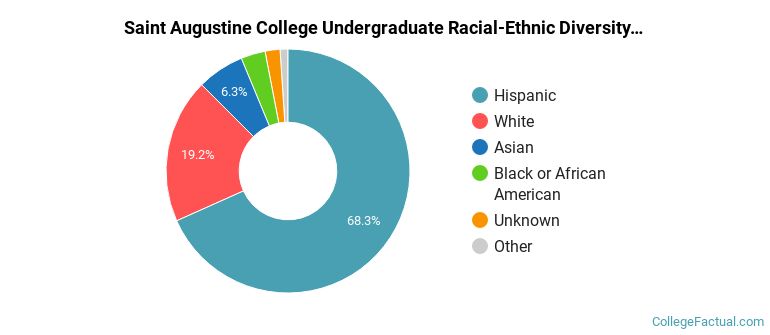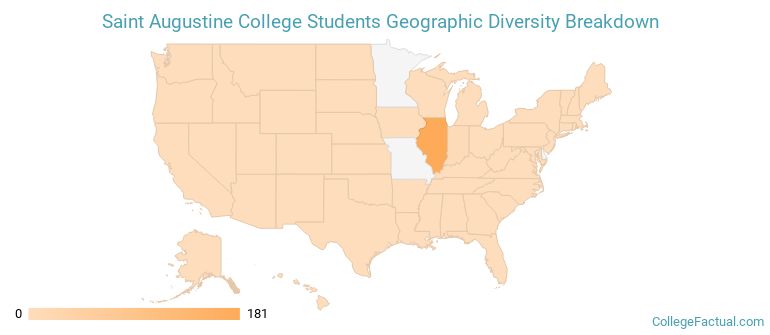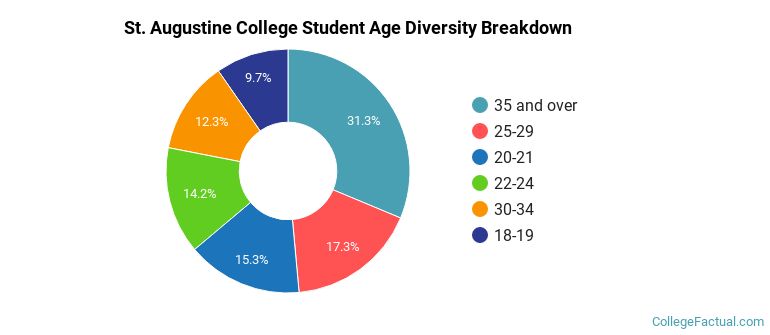 by our College Data Analytics Team
by our College Data Analytics TeamSt. Augustine College total enrollment is approximately 901 students.
Male/Female Breakdown of Undergraduates
The full-time St. Augustine College undergraduate population is made up of 80% women, and 20% men.

For the gender breakdown for all students, go here.
St. Augustine College Racial/Ethnic Breakdown of Undergraduates

| Race/Ethnicity | Number |
|---|---|
| Hispanic | 613 |
| Black or African American | 30 |
| Asian | 12 |
| International | 10 |
| White | 8 |
| Unknown | 8 |
| Multi-Ethnic | 1 |
| Native Hawaiian or Pacific Islander | 0 |
See racial/ethnic breakdown for all students.

| Race/Ethnicity | Number |
|---|---|
| Hispanic | 789 |
| Black or African American | 35 |
| Asian | 29 |
| International | 18 |
| White | 13 |
| Unknown | 12 |
| Multi-Ethnic | 2 |
| Native Hawaiian or Pacific Islander | 0 |

There are approximately 712 female students and 189 male students at St. Augustine College.
St. Augustine College ranks 1,902 out of 2,183 when it comes to geographic diversity.
3.72% of St. Augustine College students come from out of state, and 1.05% come from out of the country.

The undergraduate student body is split among 2 states (may include Washington D.C.). Click on the map for more detail.

| State | Amount |
|---|---|
| Illinois | 181 |
| Indiana | 7 |
| Alaska | 0 |
| Alabama | 0 |
| Arkansas | 0 |
Students from 22 countries are represented at this school, with the majority of the international students coming from Venezuela, Mexico, and Nepal.
Learn more about international students at St. Augustine College.
A traditional college student is defined as being between the ages of 18-21. At St. Augustine College, 24.68% of students fall into that category, compared to the national average of 60%.

| Student Age Group | Amount |
|---|---|
| 35 and over | 388 |
| 25-29 | 214 |
| 20-21 | 190 |
| 22-24 | 176 |
| 30-34 | 152 |
| 18-19 | 120 |
| Under 18 | 0 |
Footnotes
*The racial-ethnic minorities count is calculated by taking the total number of students and subtracting white students, international students, and students whose race/ethnicity was unknown. This number is then divided by the total number of students at the school to obtain the racial-ethnic minorities percentage.
References
Department of Homeland Security Citizenship and Immigration Services
Read College Factual's Diversity Ranking Methodology.